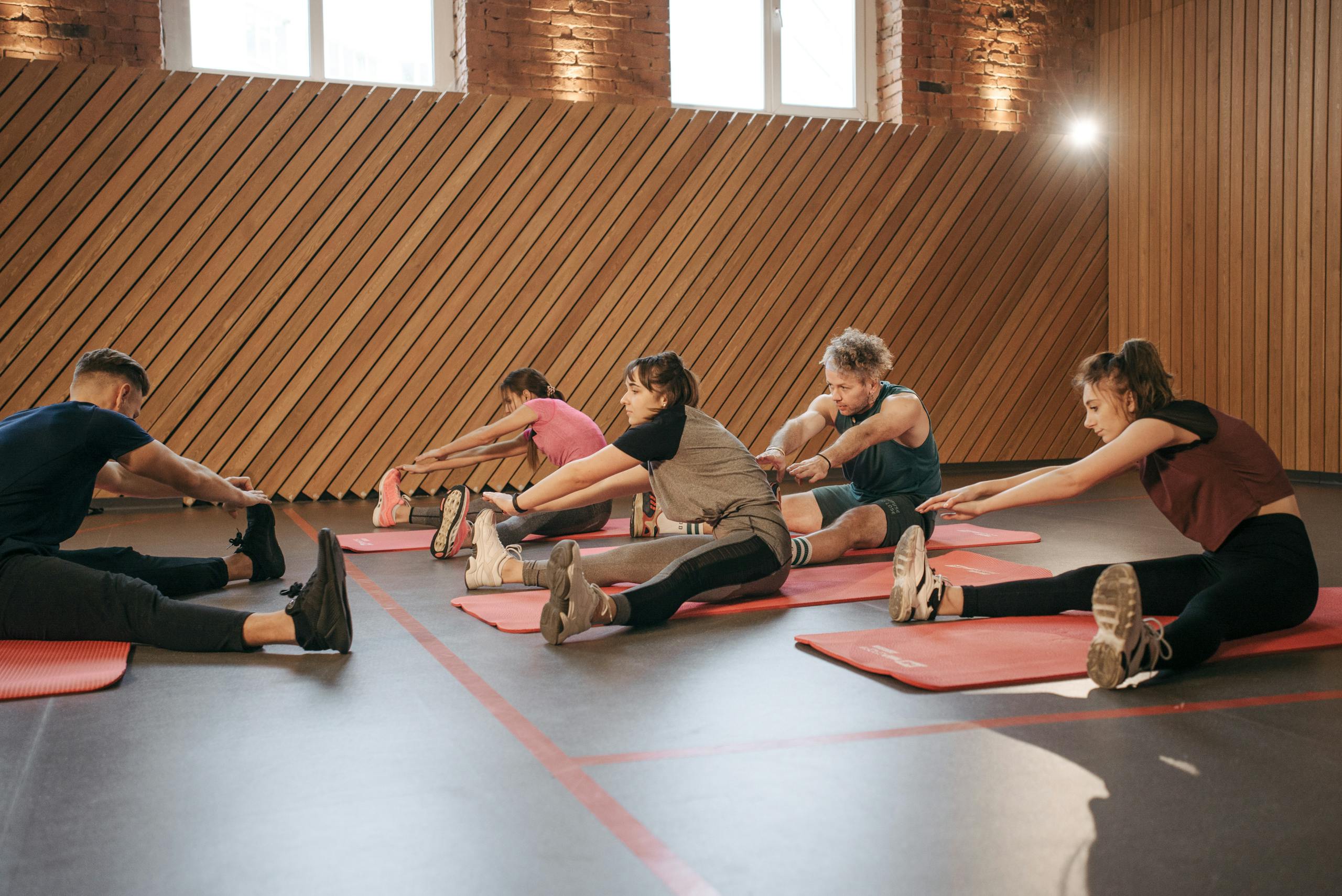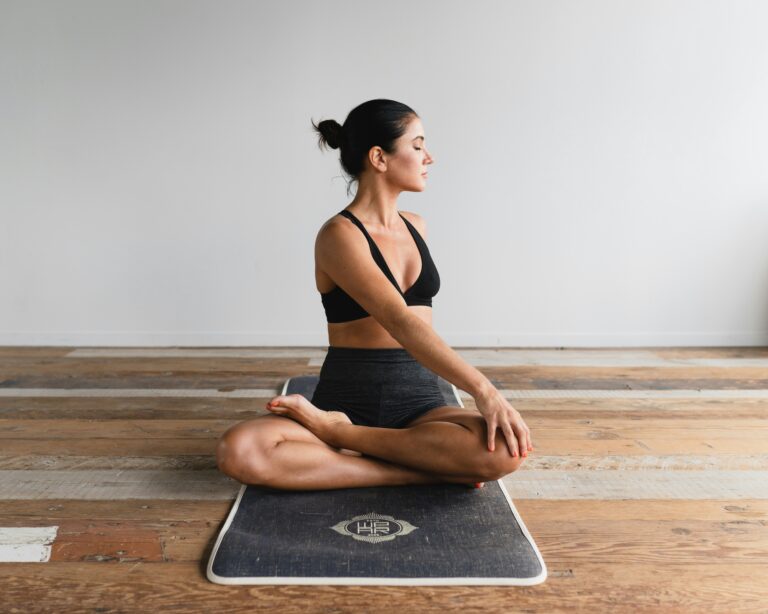Chronic pain affects 1 in 5 adults, making it one of the top causes of disability worldwide. That’s a scary statistic: millions of people wake up every day fighting persistent pain that affects their work, relationships and overall life. Chronic low back pain is one of the most common and debilitating forms of chronic pain, reducing quality of life for those affected.
Managing chronic pain often involves a combination of movement-based therapies. Still, there is considerable confusion about whether to focus on stretching exercises, strengthening exercises, or a combination of both. Some people swear by daily yoga, while others find relief through resistance training. Chronic low back pain requires a comprehensive treatment approach that goes beyond medication, incorporating exercise and therapy for best results. The truth is, both methods have their benefits for pain management.
There is also confusion around which approach is best for specific conditions. Research shows both stretching and strengthening can be effective for conditions like low back pain, but the best results come from a personalized plan tailored to the individual.
This guide will break down the pros and cons of stretching vs strengthening exercises for chronic pain. You’ll learn how each works, when to use them and most importantly, how to balance them for lasting results. By the end, you’ll have actionable strategies to create a personalized pain management plan that fits your lifestyle and specific needs.
What is Chronic Pain and How Does Movement Help?
Chronic pain is defined as pain that lasts more than 3 months, which is way longer than the normal healing time for an injury. Unlike acute pain, which is a protective warning signal, chronic pain often continues even after the original injury has healed.
Common causes of chronic pain are:
- Chronic low back pain from muscle imbalances, disc issues or other health conditions
- Joint pain from arthritis or repetitive stress
- Fibromyalgia, which affects muscles and soft tissues
- Nerve pain from conditions like diabetes or injuries
- Tension headaches from neck and shoulder tightness
Movement helps alleviate pain by addressing multiple factors simultaneously. Movement improves flexibility, allowing tight muscles to relax and joints to move through their full range of motion. It also builds muscle strength, which supports good posture and reduces strain on vulnerable areas. People with chronic pain often have trouble sleeping due to persistent discomfort. Additionally, exercise promotes circulation to damaged tissues, delivering oxygen and nutrients while removing inflammatory waste products. This increased blood flow accelerates healing and reduces the transmission of pain signals to the brain.
The risks of a sedentary lifestyle cannot be overstated for those with chronic pain. When you avoid movement due to discomfort, muscles weaken, joints stiffen, and pain often intensifies. This creates a vicious cycle where pain leads to inactivity, which leads to more pain. Various health conditions can further complicate pain management and recovery.
The Case for Stretching Exercises
What are Stretching Exercises?
Stretching exercises are activities that lengthen muscles to increase flexibility and range of motion. These movements help counteract the muscle tightness and joint stiffness that often accompany chronic pain conditions.
Types of stretching include:
- Static stretching: Holding a position for 15-60 seconds
- Dynamic stretching: Moving through gentle, controlled motions
- Yoga: Combining stretches with breathing and mindfulness
- PNF stretching: Using muscle contractions to deepen stretches
How Stretching Helps Chronic Pain
Stretching has several mechanisms that contribute to pain relief, making it particularly useful for addressing specific conditions.
Relieving muscle tightness is perhaps the most immediate benefit. When muscles are contracted for extended periods, they develop trigger points and knots that refer pain to other areas. Gentle stretching helps these muscles release tension and return to their normal resting length.
Manual therapies, such as massage or chiropractic care, can complement stretching exercises to enhance pain relief, providing additional non-pharmacological options for managing chronic pain.
Improves joint range of motion by addressing the soft tissue restrictions that limit movement. Many people with chronic pain develop compensatory movement patterns that create stiffness in some areas while overworking others. Targeted stretching can restore balance.
Encourages relaxation through the parasympathetic nervous system response. The slow, controlled movements and deep breathing associated with stretching activate the body’s rest-and-digest response, which can reduce stress hormones and pain perception.
Stretching is particularly effective for chronic pain conditions involving muscle tightness, such as tension headaches, lower back pain caused by prolonged sitting, or neck pain resulting from poor posture.
Limitations of Stretching for Pain Relief
While stretching has many benefits, it has significant limitations that prevent it from being a complete solution for most chronic pain conditions.
Does not address the underlying weaknesses that contribute to pain. For example, if your back pain is from weak core muscles that can’t support your spine, then stretching alone won’t fix the root cause. You may get temporary relief, but the pain will come back. Systematic reviews and clinical trials have demonstrated that stretching alone may not provide long-term relief for chronic pain, underscoring the need for a comprehensive approach.
The risk of overstrengthening can worsen discomfort if done incorrectly. Forcing a muscle or bouncing can cause muscle strains or trigger protective muscle spasms. People with chronic pain often have heightened sensitivity, making them more prone to injury from aggressive strengthening.
Limited long-term prevention means that while strengthening can provide immediate relief, it doesn’t build the strength needed to prevent future pain episodes or improve overall function.
The Case for Strengthening Exercises
What are Strengthening Exercises?
Strengthening exercises are activities that build muscle strength by working against resistance. This resistance can come from weights, resistance bands, your body weight or even water.
Examples of strengthening exercises include:
- Resistance band training: Using elastic bands for controlled resistance
- Weightlifting: Using dumbbells, barbells or machines
- Bodyweight exercises: Planks, squats, lunges and push-ups
- Isometric exercises: Holding positions without movement
How Strengthening Helps Chronic Pain
Strengthening exercises address chronic pain through several powerful mechanisms, often providing more lasting relief than stretching alone.
Improves muscle balance and posture by targeting weak muscles that can’t properly support your body. Poor posture places excessive strain on joints and soft tissues, leading to pain. Strengthening exercises help restore proper alignment and reduce this strain.
Helps prevent further injuries by stabilizing weak or compromised areas. When muscles around a joint are strong, they act as natural shock absorbers and protective braces. This is particularly important for people with chronic pain who may have areas of vulnerability.
Enhances overall body mechanics by teaching muscles to work together efficiently. Many chronic pain conditions develop from compensation patterns where some muscles overwork while others become weak. Strengthening exercises can help restore proper movement patterns.
Patients with chronic pain often experience improved function and reduced symptoms when incorporating strengthening exercises into their routine.
Research consistently shows that strengthening exercises provide better long-term outcomes for many chronic pain conditions, notably lower back pain and arthritis.
Limitations of Strengthening for Pain Relief
Despite its benefits, strengthening has challenges for people with chronic pain.
It may be too hard for someone in severe pain if not done correctly. Starting too aggressively can increase pain and discourage exercise. Many people with chronic pain have reduced exercise tolerance and need gradual progression. In some cases, if exercise doesn’t provide enough relief, patients may require high doses of pain medication, which can have side effects.
Requires proper form and progression to avoid injury. Bad technique can put too much stress on already vulnerable areas. This is especially important for people with chronic pain who may have altered movement patterns or muscle imbalances.
It can initially increase discomfort as muscles adapt to new demands. This temporary increase in soreness can be concerning for people already dealing with chronic pain.
Range of Motion
Range of motion (ROM) is how far and in what directions a joint or group of joints can move. It’s a fundamental part of physical function, allowing you to bend, reach, twist and do daily activities with comfort and ease. For anyone with chronic pain, understanding and improving range of motion is key to reducing discomfort and maintaining independence.
What is Range of Motion?
Range of motion describes the distance and direction a joint can move between its flexed and extended positions. Each joint in the body—such as the shoulder, knee, and hip—has its unique range of motion, measured in degrees. For example, your shoulder joint allows for a wide range of movements, lifting your arm overhead, rotating it and moving it out to the side. In contrast, your elbow primarily bends and straightens. These differences in joint structure and function mean some joints are more mobile, others are designed for stability and support.
Why It Matters for Chronic Pain
Chronic pain often goes hand in hand with reduced range of motion. When pain limits how much you move a joint, the surrounding muscles and tissues can become stiff and inflamed, moving even harder. Over time, this can create a cycle of more pain, muscle weakness and even higher risk of injury. A restricted range of motion can also affect your posture and the way you move, sometimes causing additional strain on other parts of your body. That’s why maintaining or improving your range of motion is part of chronic pain management and overall pain management strategies.
How to Improve Range of Motion Safely
You can improve your range of motion with the right approach. Mix static stretching, dynamic stretching, and resistance training into your routine to lengthen tight muscles, strengthen weak areas, and support healthy joint movement.
Stretching exercises like holding a gentle hamstring stretch or moving your arms in circles can help increase flexibility and reduce pain.
Resistance training using free weights, resistance bands, or your body weight builds muscle strength to support your joints through their full range of motion. Start slow and listen to your body, especially if you have chronic pain.
Consulting a physical therapist or pain management specialist can help you develop a personalized exercise plan that addresses your specific needs and limitations. Yoga, Pilates, and mindful movement practices can also be beneficial for improving flexibility, reducing stress, and enhancing overall range of motion.
Stretching vs Strengthening Exercises: A Direct Comparison
Aspect | Stretching | Strengthening |
|---|---|---|
| Primary benefit | Immediate tension relief | Long-term stability and prevention |
| Best for | Muscle tightness, stiffness | Weakness, instability, poor posture |
| Time to results | Immediate to hours | Weeks to months |
| Sustainability | Requires daily maintenance | Builds lasting improvements |
| Risk level | Low when done gently | Moderate, requires proper form |
| Equipment needed | Minimal | Varies (bands, weights, bodyweight) |
Both stretching and strengthening exercises are generally low-cost and accessible, making them practical for most people with chronic pain.
The source of your pain determines which approach will be most effective. Stretching may be suitable for tight hamstrings that cause lower back pain, while strengthening is necessary for weak core muscles that can’t support your spine.
Flexibility vs Stability
Flexibility and stability are two sides of the mobility coin. Flexibility allows joints to move through their full range of motion, while stability provides the strength to control that movement safely and effectively.
Many chronic pain conditions involve imbalances between these two. For example, people with lower back pain often have tight hip flexors (a flexibility issue) combined with weak glutes (a stability issue). Addressing only one aspect provides incomplete relief.
Short-Term Relief vs Long-Term Prevention
Stretching provides faster relief, making it an excellent option for managing acute flare-ups or daily stiffness. You can stretch tight muscles and feel better in minutes. Strengthening takes longer to show results, but provides more comprehensive and lasting improvements. Building strength requires consistent effort over weeks or months, but the payoff is less pain frequency and intensity over time.
Which Activities Are Most Effective When Combined?
The most effective approach combines both stretching and strengthening in a complementary way. For example:
- Stretch tight hip flexors to strengthen weak glutes
- Mobilize the stiff thoracic spine, then strengthen the postural muscles
- Release tight calves, then strengthen foot and ankle stabilizers
This combination addresses immediate symptoms while building long-term resilience.
How to Balance Both for Long-Term Pain Relief
Creating a balanced approach requires strategic planning that incorporates both stretching and strengthening while respecting your body’s current limitations and pain levels.
A Practical Weekly Schedule
Option 1: Alternating Days
- Monday: Gentle stretching and mobility work
- Tuesday: Light strengthening (upper body focus)
- Wednesday: Yoga or dynamic stretching
- Thursday: Strengthening (lower body focus)
- Friday: Full body stretching session
- Saturday: Combined strength and flexibility workout
- Sunday: Rest or gentle walking
Option 2: Combined Sessions
- 5-10 minutes: Warm-up with gentle movement
- 10-15 minutes: Stretching tight areas
- 15-20 minutes: Strengthening weak areas
- 5-10 minutes: Cool-down stretching
The Importance of Warm-ups and Cool-downs
Warm-ups prepare your body for exercise by increasing blood flow and raising muscle temperature. For people with chronic pain, this is particularly important as cold, stiff muscles are more prone to injury.
Effective warm-ups include:
- 5-10 minutes of light walking or stationary cycling
- Gentle range of motion movements
- Dynamic stretches that mimic your planned exercises
Cool-downs help your body transition back to rest while maintaining the flexibility gains from your workout. This is the ideal time for static stretching when muscles are warm and pliable.
Progression Principles
Start with exercises you can do with minimal to no pain increase. This may be gentle stretches or strengthening exercises that use only your body weight or light resistance bands.
Progress gradually by:
- Increasing duration before increasing intensity
- Adding resistance or range of motion slowly
- Listening to your body’s feedback
- Expecting some mild soreness but not sharp pain
Pharmacological Treatments for Chronic Pain
While movement-based therapies are essential for managing chronic pain, medications can also play a role, especially when pain is severe or impacting daily life. Pharmacological treatments can reduce pain intensity, improve sleep, and support a better quality of life, particularly when used in conjunction with exercise, stress management, and other non-drug strategies.
Common Medications and Their Uses
There are several types of medications used to manage chronic pain, each with its benefits and considerations. Nonsteroidal anti-inflammatory drugs (NSAIDs) such as ibuprofen and naproxen are often the first line of defense for mild to moderate pain and inflammation. For more severe pain, opioid therapy may be considered. However, these medications are typically used short-term due to the risk of dependence and side effects, especially at higher doses.
Some chronic pain conditions, like neuropathic pain, respond better to medications originally developed for other purposes. Tricyclic antidepressants and certain anticonvulsants (like gabapentin or pregabalin) can help relieve chronic pain by calming overactive nerves and also treat depression or anxiety that often accompany long-term pain. These medications can be beneficial for people with conditions such as fibromyalgia or pain resulting from nerve damage.
Work closely with your healthcare provider or a pain management specialist to determine the best medication regimen for you. Medications should be used as part of a comprehensive pain management plan that includes physical activity, stretching exercises, resistance training and stress management techniques. Regular check-ins with your provider help monitor for side effects, adjust dosages and ensure your treatment is supporting your overall quality of life. Remember, medications are just one tool in the toolbox for managing chronic pain—combining them with healthy lifestyle changes and movement-based therapies offers the best chance for long-term pain relief.
Expert Tips for Chronic Pain Relief
Start Slow and Increase Intensity Gradually
The most common mistake people make when starting an exercise program for chronic pain is doing too much too soon. Your body needs time to adapt to new demands, especially when dealing with chronic pain conditions.
Begin with 10-15 minutes of gentle movement daily. This may be simple stretches, short walks or basic strengthening exercises. Focus on consistency rather than intensity during your first few weeks.
See a Physical Therapist for a Personalized Program
A physical therapist can assess your specific condition and create a customized exercise program tailored to your needs. They can identify muscle imbalances, movement dysfunctions and pain triggers that may not be obvious to you.
Physical therapists also provide valuable education on proper exercise technique and help you progress safely through different phases of rehabilitation.
Use Tools Like Foam Rollers to Supplement Exercises
Foam rolling, also known as self-myofascial release, can complement your stretching and strengthening exercises. This technique helps release muscle tension and improve tissue quality.
Use foam rollers:
- Before exercise to prepare the muscles
- After exercise, to aid recovery
- On rest days for maintenance
Focus on major muscle groups, such as your calves, IT bands, quadriceps, and upper back. Roll slowly and pause for 30-60 seconds on tender spots.
Incorporate Mindfulness Practices for Holistic Pain Management
Chronic pain is physical and psychological. Mindfulness techniques can break the cycle of pain, stress and muscle tension.
Simple breathing exercises can be done anywhere:
- Inhale slowly for four counts
- Hold for four counts
- Exhale slowly for six counts
- Repeat 5-10 times
This activates your parasympathetic nervous system, reducing pain perception.
Track Your Progress and Adjust Accordingly
Keep a simple pain and exercise journal to identify patterns and track improvements. Note:
- Daily pain levels (1-10 scale)
- Exercises performed
- Duration and intensity
- How did you feel during and after exercise
This will help you understand what works best for your specific condition and adjust your routine accordingly.
Finding Your Way to Pain-Free Living
The journey to chronic pain relief through exercise isn’t about choosing between stretching and strengthening – it’s about finding the right combination that works for you. Both have valuable benefits that complement each other when used strategically.
Remember, progress takes time and consistency. Some days will be better than others, and that’s completely normal. The key is to have a routine that includes both flexibility and strength work, and respect your body’s current limitations.
Your path to pain relief is unique to you. What works for others may need to be modified for your specific condition, fitness level and lifestyle. Start slow, be patient with yourself and celebrate small wins along the way. Get started today by choosing one stretching exercise and one strengthening exercise that target your main area of pain. Do them daily for the next week, and then increase the frequency from there. Your future self will thank you for taking this first step towards pain relief.
Medical Notice:
This content is for informational purposes only and is not intended as medical advice, diagnosis or treatment. Always consult with a qualified healthcare professional before making any changes to your diet, exercise or health regimen. Never disregard professional medical advice or delay seeking it because of something you have read on this site.





